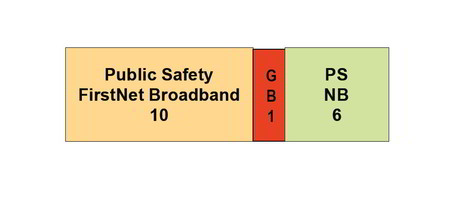NPSTC to FCC — don't mix bands

In a paper submitted to the US Federal Communications Commission (FCC), the US National Public-Safety Telecommunications Council (NPSTC) has recommended against mixing narrowband and broadband technologies in the same spectrum segment.
In response to some jurisdictions expressing “potential interest in converting the 700 MHz narrowband spectrum to broadband use”, NPSTC said that doing so “would result in a mix of narrowband and broadband operations across different jurisdictions in the same block of 700 MHz band spectrum”.
“Based on information currently available, NPSTC recommends against mixing broadband and narrowband operations in the same spectrum, as doing so can negatively impact both public safety communications reliability and interoperability.”
Under current FCC 700 MHz rules, narrowband public safety operations have a designated 6 +6 MHz block of paired spectrum while broadband operations are planned in a designated 10 +10 MHz paired block of spectrum licensed to the First Responder Network Authority (FirstNet).
A 1 +1 MHz ‘guardband’ also licensed to FirstNet separates narrowband and broadband spectrum.
Although Section 6102 of Public Law 112-96 provides that the FCC may allow flexible use of the narrowband spectrum, it does not require the FCC to do so. Furthermore, for interoperability, the FCC designated Project 25 (P25) as the technology required for narrowband interoperability channels and Long Term Evolution (LTE) as the technology for broadband operations.
In its paper, NPSTC said the “wisdom of this spectrum plan is that it helps prevent interference between narrowband and broadband operations, thereby increasing communications reliability. In contrast, mixing narrowband and broadband operations in the same spectrum undercuts that benefit for public safety by increasing the risk of interference.
“Although the underlying engineering analysis is complex, the bottom line is that attempting to operate broadband and narrowband operations in the same area impacts the coverage reliability of both narrowband and broadband systems.
“Given a broadband LTE signal deployed in the narrowband spectrum would likely be 5 MHz wide, it could affect up to 400 narrowband 12.5 kHz channels on a co-channel basis, spanning general use, state and interoperability channels.”
You can read the full paper here.
5G drones deliver live images from emergencies
Timely images allow emergency responders to gain an early impression of the situation and provide...
NZ emergency services approach cyclone season with better comms
Emergency services will face this cyclone season with improved cellular communications...
Triple Zero Custodian Bill passes, as Senate inquiry looms
With an open inquiry into Optus and the Triple Zero ecosystem just days away, new legislation has...



